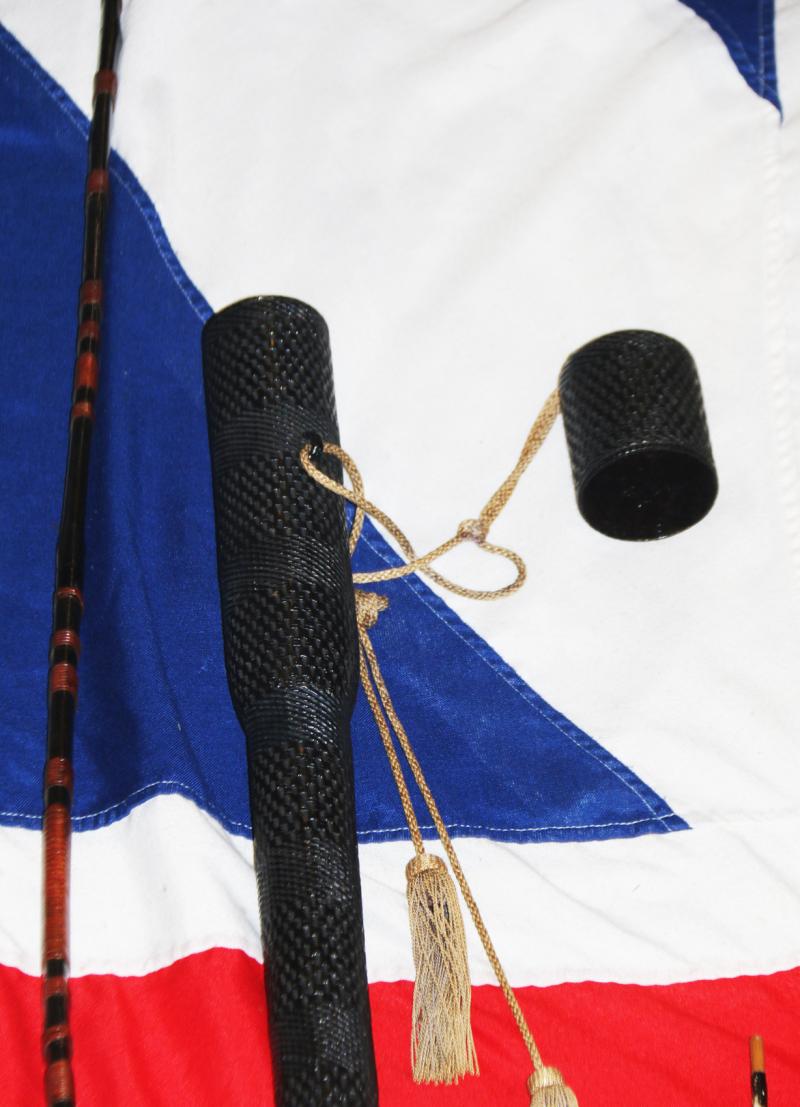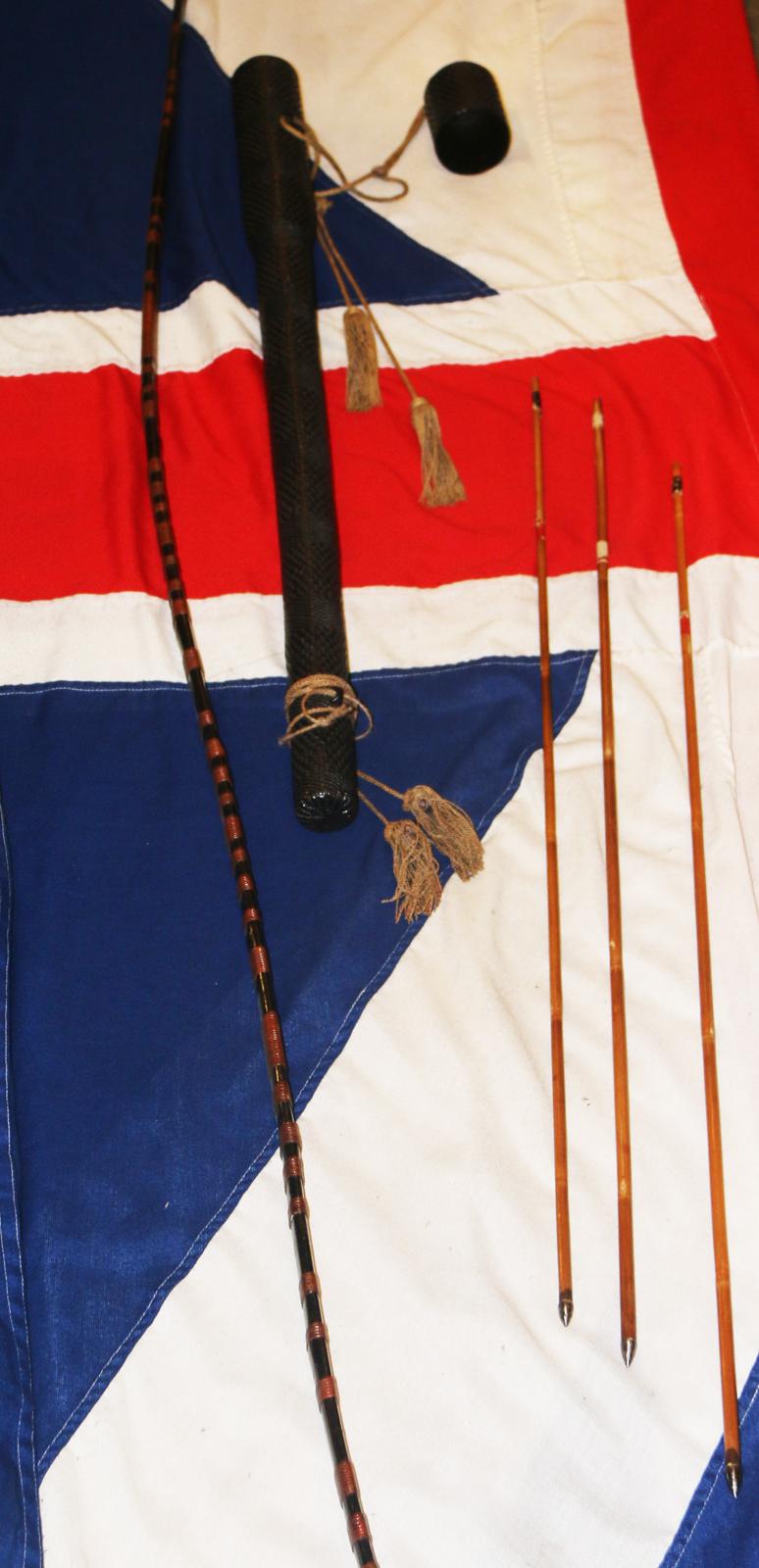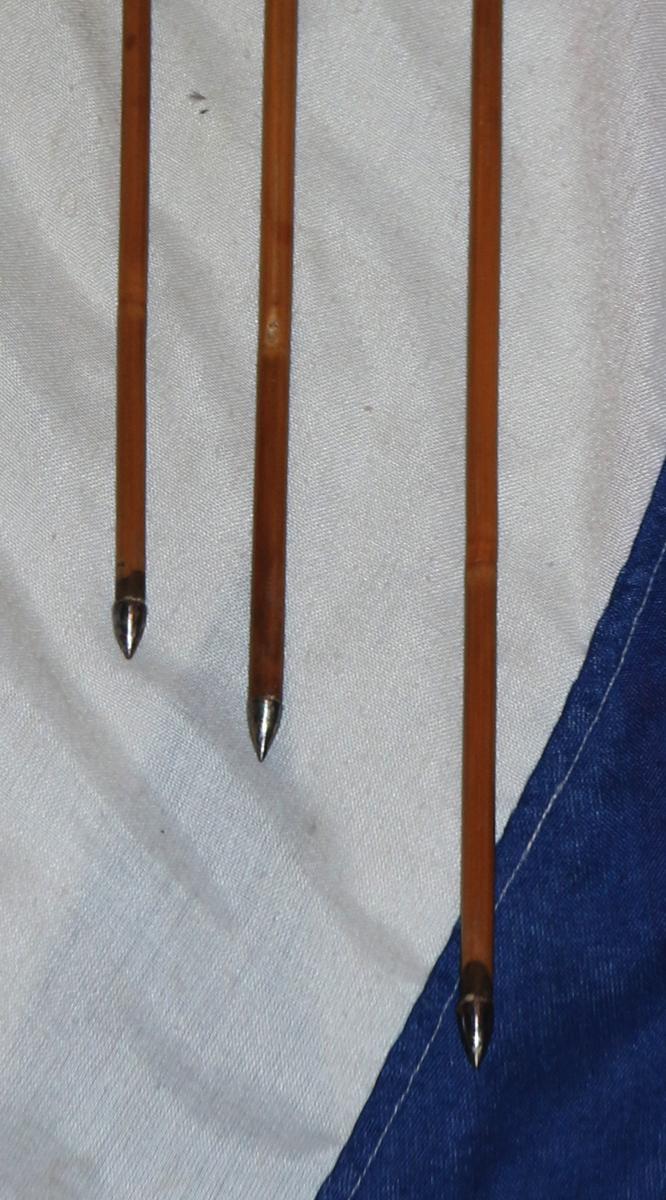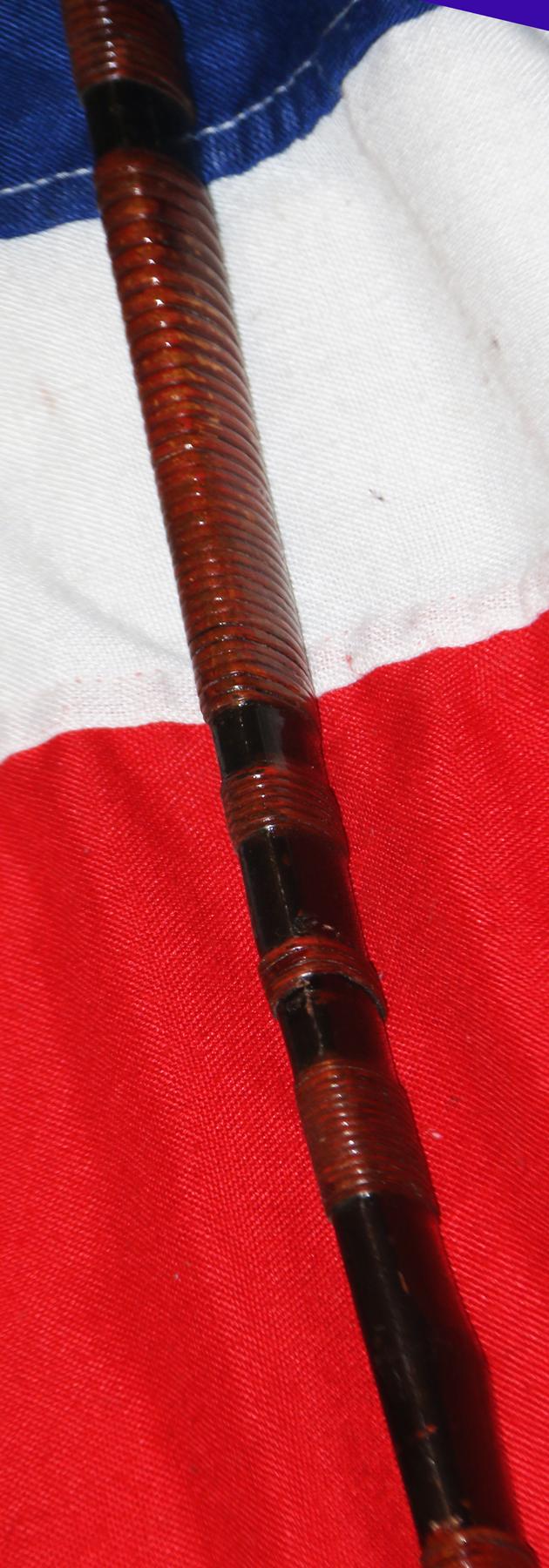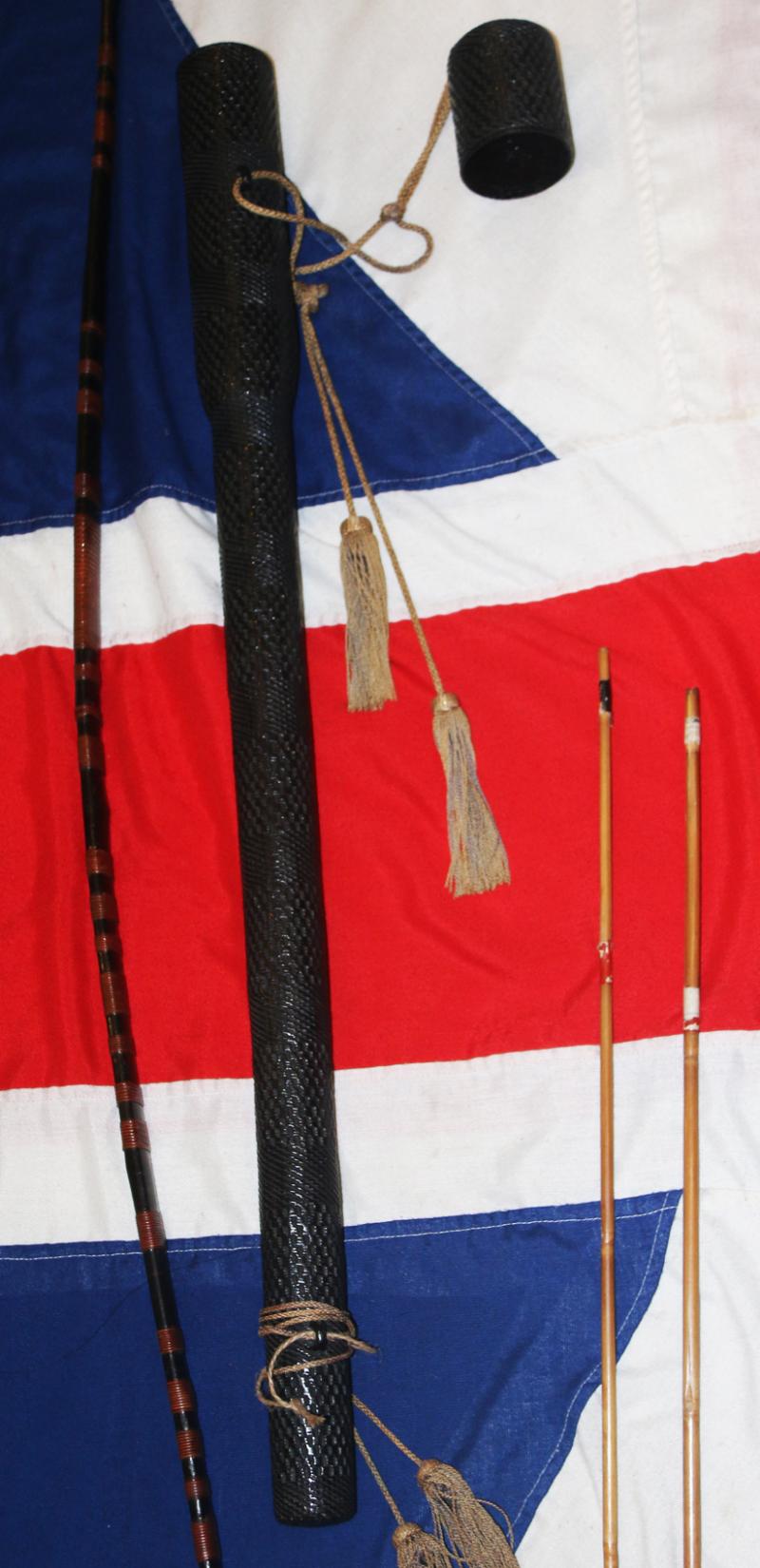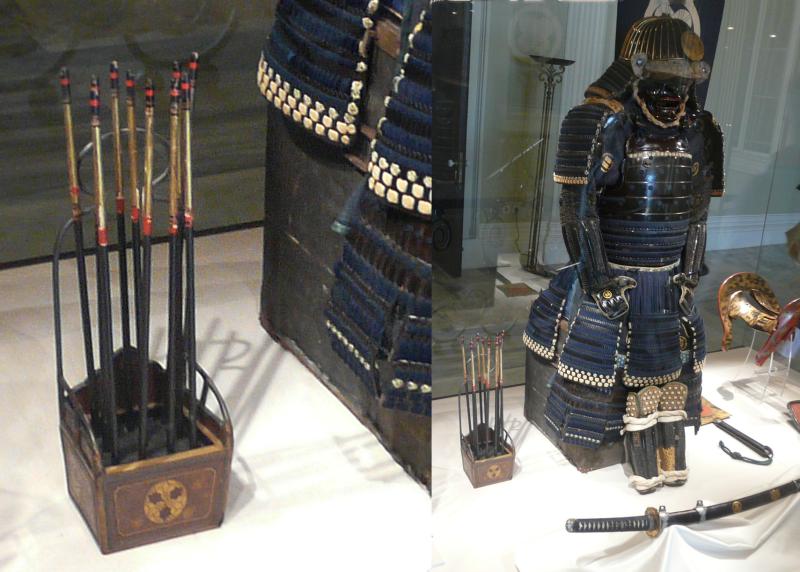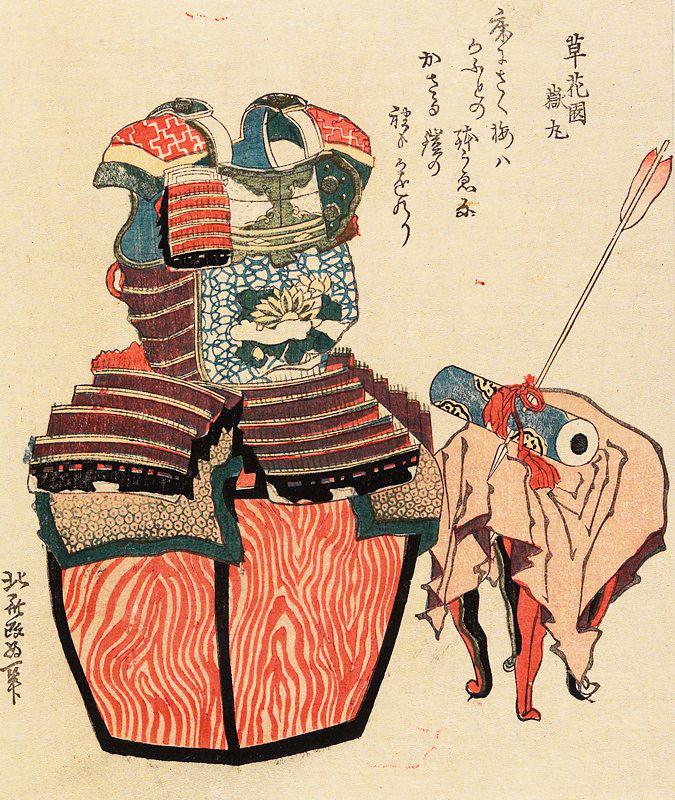A Rare, Original, Japanese Antique Edo Period Samurai War Bow 'Daikyū ' With Urushi Lacquered Woven Rattan Quiver 'Yabira Yazutsu' With 3 'Ya' Arrows
A wonderful, original, antique Edo period {1603-1863} Samurai long war bow 'Yumi', made in either yohonhigo or gohonhigo form {4 piece or 5 piece bamboo laminate core, that is surrounded by wood and bamboo, then bound with rattan and lacquered}
Acquired by us by personally being permitted to select from the private collection one of the world's greatest, highly respected and renown archery, bow and arrow experts. Who had spent his life travelling the world to lecture on archery and to accumulate the finest arrows and bows he could find. .
Edo Era, 1600 to 1700's, with practice arrows, unfeathered, that fit into in a lacquer quiver {yabira yazutsu} with three arrows {ya}. we show a photo in the gallery from a samurai museum display that shows a practice arrow stand with the same form of flightless 'ya' inbedded in sand within the stand.
The arrows are made using yadake bamboo (Pseudosasa Japonica), a tough and narrow bamboo long considered the choice material for Japanese arrow shafts. The lidded quiver is a beautiful piece of craftsmanship in hardened urushi lacquer on woven rattan. Practice arrows were a fundamental part of samurai bowmanship.
These sets are very rarely to be seen and we consider ourselves very fortunate, indeed privileged, to offer another one.
It was from the use of the war bow or longbow in particular that Chinese historians called the Japanese 'the people of the longbow'. As early as the 4th century archery contests were being held in Japan. In the Heian period (between the 8th and 12th centuries) archery competitions on horseback were very popular and during this time training in archery was developed. Archers had to loose their arrows against static and mobile targets both on foot and on horseback. The static targets were the large kind or o-mato and was set at thirty-three bow lengths and measured about 180cm in diameter; the deer target or kusajishi consisted of a deer's silhouette and was covered in deer skin and marks indicated vital areas on the body; and finally there was the round target or marumono which was essentially a round board, stuffed and enveloped in strong animal skin. To make things more interesting for the archer these targets would be hung from poles and set in motion so that they would provide much harder targets to hit. Throughout feudal Japan indoor and outdoor archery ranges could be found in the houses of every major samurai clan. Bow and arrow and straw targets were common sights as were the beautiful cases which held the arrows and the likewise ornate stands which contained the bow. These items were prominent features in the houses of samurai. The typical longbow, or war bow (daikyu), was made from deciduous wood faced with bamboo and was reinforced with a binding of rattan to further strengthen the composite weapon together. To waterproof it the shaft was lacquered, and was bent in the shape of a double curve. The bowstring was made from a fibrous substance originating from plants (usually hemp or ramie) and was coated with wax to give a hard smooth surface and in some cases it was necessary for two people to string the bow. Bowstrings were often made by skilled specialists and came in varying qualities from hard strings to the soft and elastic bowstrings used for hunting; silk was also available but this was only used for ceremonial bows. Other types of bows existed. There was the short bow, one used for battle called the hankyu, one used for amusement called the yokyu, and one used for hunting called the suzume-yumi. There was also the maru-ki or roundwood bow, the shige-no-yumi or bow wound round with rattan, and the hoko-yumi or the Tartar-shaped bow. Every Samurai was expected to be an expert in the skill of archery, and it presented the various elements, essence and the representation of the Samurai's numerous skills, for hunting, combat, sport and amusement, and all inextricably linked together.
The mounted archer mainly controls his horse with his knees, as he needs both hands to draw and shoot his bow. As he approaches his target, he brings his bow up and draws the arrow past his ear before letting the arrow fly with a deep shout of In-Yo-In-Yo (darkness and light).
Yabusame (流鏑馬) is a type of mounted archery in traditional Japanese archery. An archer on a running horse shoots three special "turnip-headed" arrows successively at three wooden targets.
This style of archery has its origins at the beginning of the Kamakura period. Minamoto no Yoritomo became alarmed at the lack of archery skills his samurai possessed. He organized yabusame as a form of practice.
Nowadays, the best places to see yabusame performed are at the Tsurugaoka Hachiman-gū in Kamakura and Shimogamo Shrine in Kyoto (during Aoi Matsuri in early May). It is also performed in Samukawa and on the beach at Zushi, as well as other locations.
On his final day in Japan in May 1922, Edward, Prince of Wales was entertained by Prince Shimazu Tadashige (1886–1968), son of the last feudal lord of the Satsuma domain. Lunch was served at Prince Shimazu’s villa, followed by an archery demonstration. Afterwards, the Prince of Wales was presented with a complete set for archery practice, including an archer’s glove, arm guard and reel for spare bowstrings
Code: 25534
3550.00 GBP


